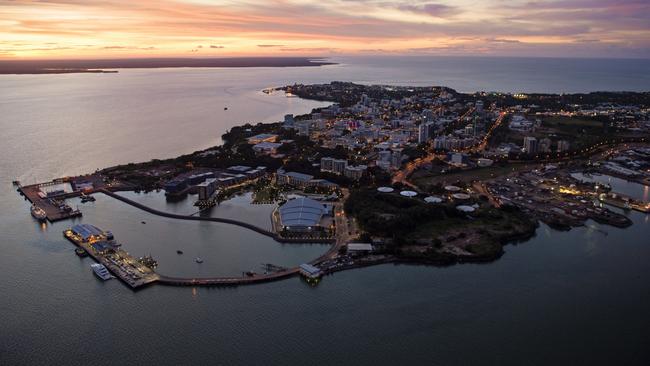Darwin Harbour monitoring records spike in toxic metals in popular fishing spots
A spike in heavy metal readings across Darwin Harbour in 12 months has been recorded. Find out why it’s got an environmental group concerned.
News
Don't miss out on the headlines from News. Followed categories will be added to My News.
Toxic heavy metal levels are on the rise in some of Darwin’s most popular fishing spots.
The latest Darwin Harbour Integrated Marine Monitoring and Research Program Pressure Monitoring Report raised concerns for an environmental group, who say water quality indicators are rapidly deteriorating.
A 2022-23 Inpex funded report found there were five times the amount of lead in Darwin Harbour compared to the previous 12 months.
The NT Environment Department report also recorded four times the amount of chromium, and double the copper levels from 2021-22.

The third monitoring report said the water quality declined in 60 per cent of the 21 testing sites over 12 months, with the worst polluted waterways at Elizabeth River, near East Arm, the Palmerston South catchments and Bleesers Creek.
Across the harbour there was a recorded increase to eight of the 12 monitored pollutants, including potentially toxic metals like arsenic, lead, cadmium, chromium and nickel.
The testing also found a sharp decline in the water quality over the past 12 months at Pioneer Creek, in Middle Arm and Micket Creek, near the Shoal Bay waste facility.
Only three sites — Charles Point, Rapid Creek and Buffalo Creek — had improved water quality since the 2008 baseline study.
The report said the main drivers of pollution were Darwin’s population growth and economic activity, alongside the El Niño-Southern Oscillation.
The NT Environment Centre campaigner Bree Ahrens said it was a “grave concern” that the pollutants were increasing at an “alarmingly accelerated rate”.
“It does beg the question, can the harbour withstand more development, more dredging and more vessel traffic?” Ms Ahrens said.

“Because that is what we’re going to get from the Middle Arm gas hub.”
She said the dredging needed for Middle Arm “threatened to unleash more heavy metals which are found in the sediment” and unlock industries which would further add to harbour contamination.
She said the pollutants not only threatened the marine ecosystem but also the health of Territorians who fished in these same waterways.
Ms Ahrens there was currently no bioaccumulation testing, which tracks how chemicals build up within the food chain and concentrate in predators like barramundi.

The Environment and Fisheries Ministers did not respond to questions about the pollutants or bioaccumulation testing.
However an Environment Department spokesman said “generally, most values in most sample locations are below the default guidelines values for aquatic health, as set in the Australian and New Zealand Guidelines for Fresh and Marine Water Quality”.
The Environment Department maintained that the current regulatory and monitoring system would ensure the heath of the waterways were “maintained”, with a new Benthic Sediment Monitoring system to be rolled out.
A spokesman argued that localised higher values were “residual effects of historic management practices”.
He said the pollutant readings were due to the “use of leaded petrol, toxic anti-fouling points and poor ore-loading methods”.
More Coverage
Originally published as Darwin Harbour monitoring records spike in toxic metals in popular fishing spots





